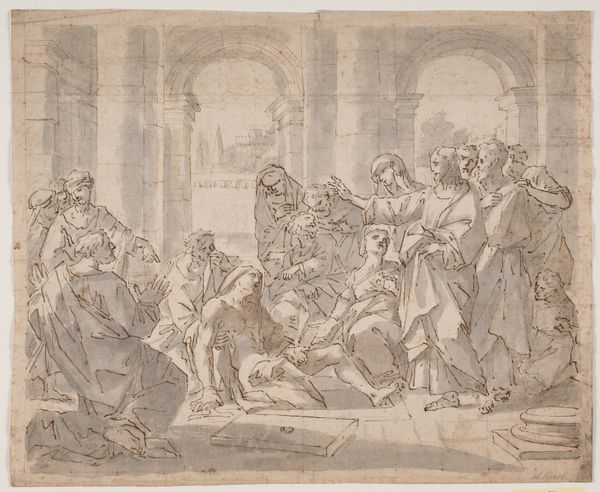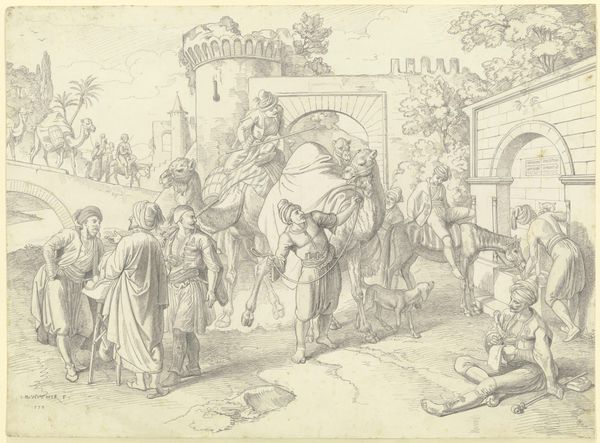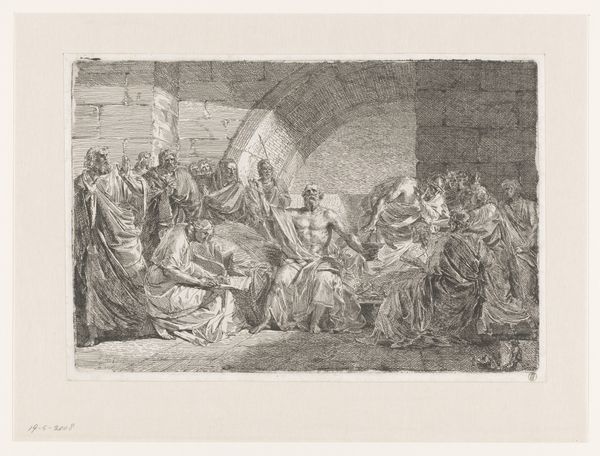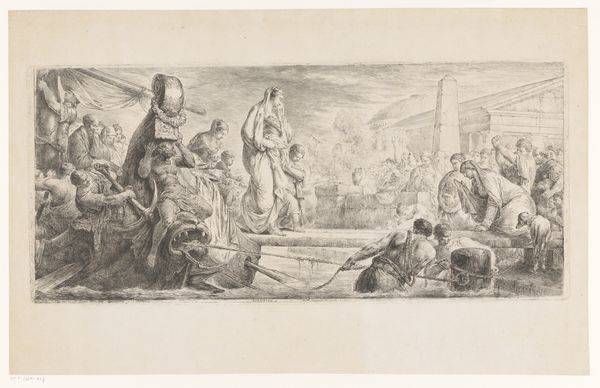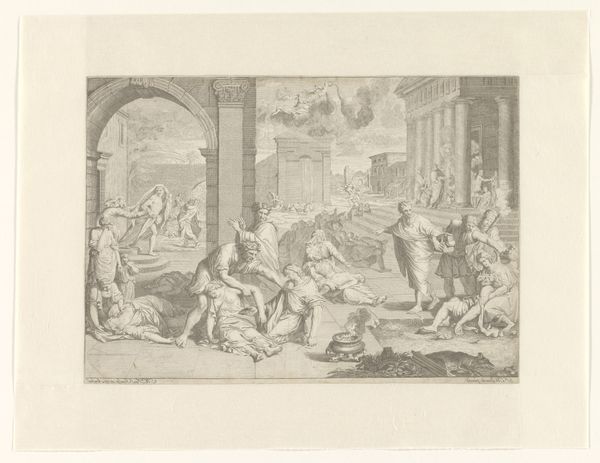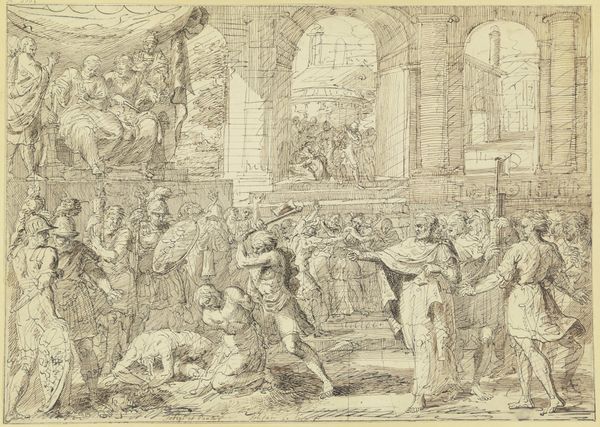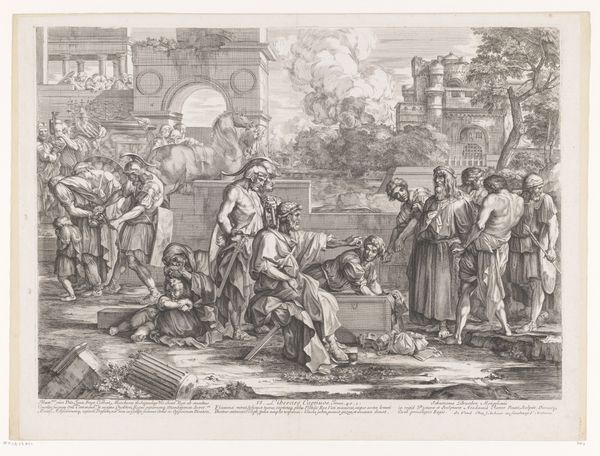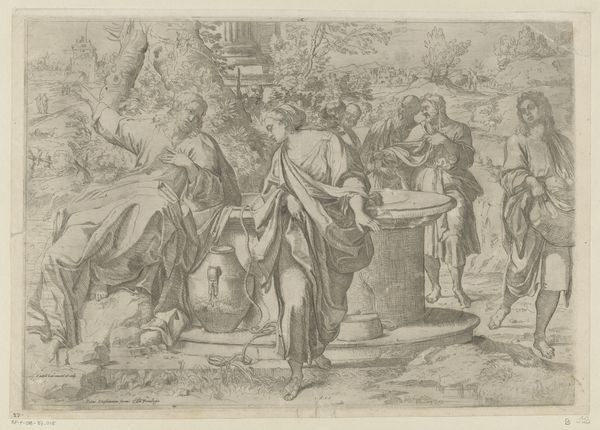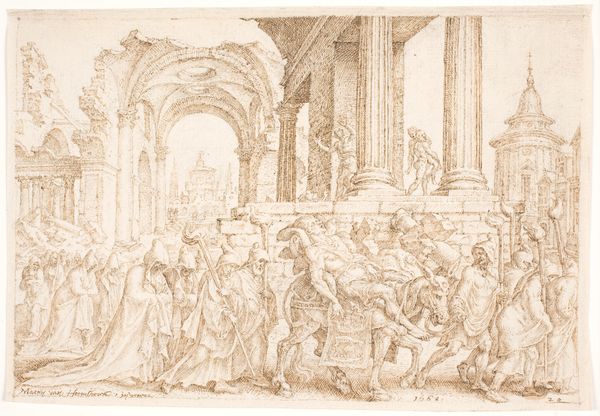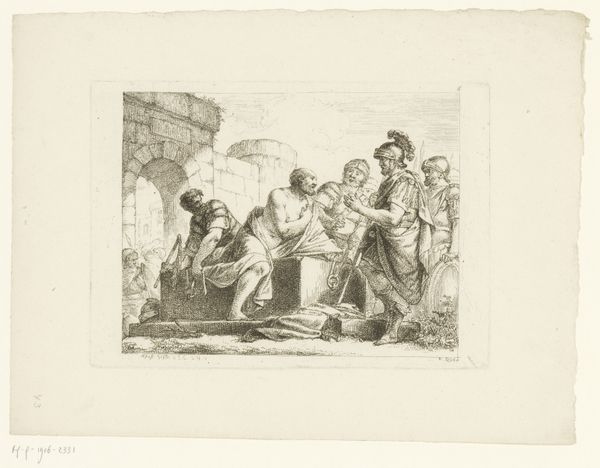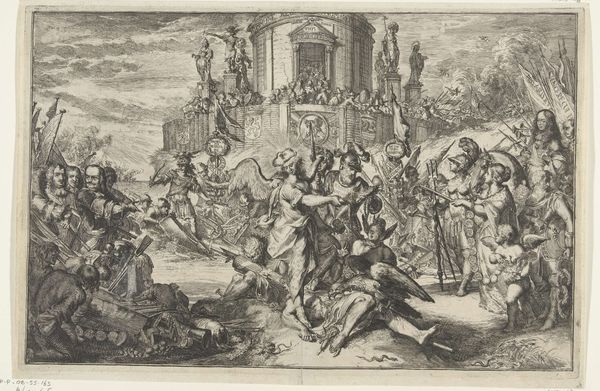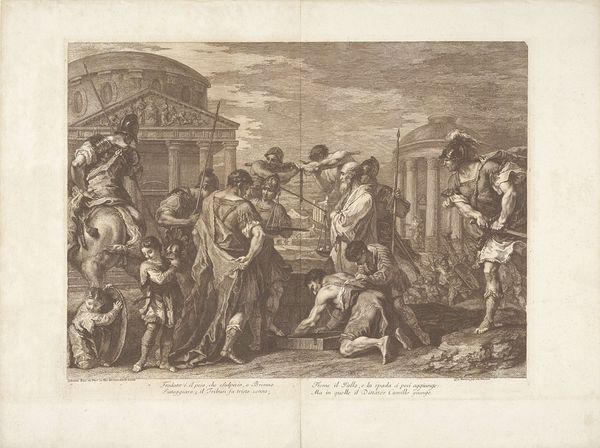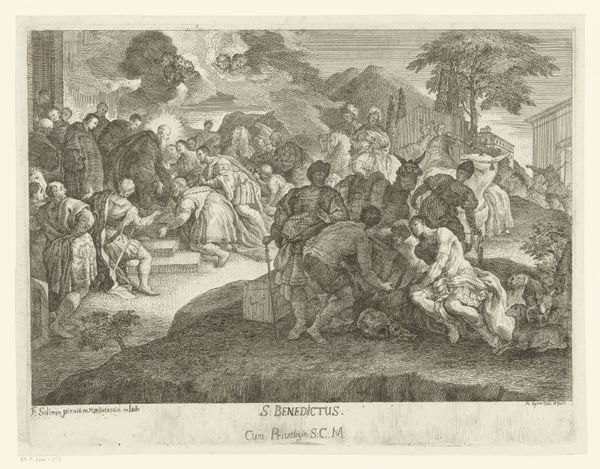
Dimensions: height 334 mm, width 423 mm
Copyright: Rijks Museum: Open Domain
Curator: Here we have Christian Wilhelm Ernst Dietrich's "Healing of the Sick," created in 1763. It's currently held in the Rijksmuseum. What is your immediate take on this piece? Editor: The overriding impression is one of desperate chaos—a scene filled with a great many suffering bodies rendered with frantic, swirling lines. The light, or lack thereof, amplifies a sense of misery. Curator: Indeed. The etching and engraving techniques contribute to this mood. Consider the composition, though; Dietrich meticulously arranges the figures to direct our gaze towards the elevated figure of Christ at the composition's center. His deliberate structure within the apparent chaos speaks to a conscious ordering of visual information. Editor: Placing this imagery in its social context, 18th century Europe grappled with profound social inequalities and devastating diseases. This print can be seen as speaking to the Church's role, or lack thereof, to providing true succor to the suffering population. Consider the backdrop too; we see what may be classical ruins, suggesting a fall from past glories. Curator: The ruined architecture is not mere backdrop, it is a framing device. Observe the archways through which the figures are entering, it’s all linear precision to guide the viewer's eye. What this creates is an intimate theatre, almost a stage for human suffering and divine intervention. Editor: An important observation, especially regarding the socio-economic stratification inherent at the time. There was a clear audience for such a narrative; religious art still fulfilled important roles in instruction and reinforcement of social order for some patrons, and as a political tool for others. Curator: It is hard to overlook the artist’s mastery, as lines themselves almost seem to writhe and suffer on the paper. It's more than just representation, it is an almost palpable emotional experience the artist conjures for us through formal skill alone. Editor: So, while the artistry evokes pathos, recognizing the social context emphasizes its power to both critique and possibly console within a society struggling with vast inequalities and diseases. Curator: Exactly. It’s about identifying formal properties which elevate socio-historical contextual factors to become so impactful in how it is understood and seen. Editor: Precisely, the tension between art as a reflective social force and formal device creating narrative. An intersection, which as our understanding broadens, shows us just how the impact of art lies at so much more than just visual information.
Comments
No comments
Be the first to comment and join the conversation on the ultimate creative platform.
